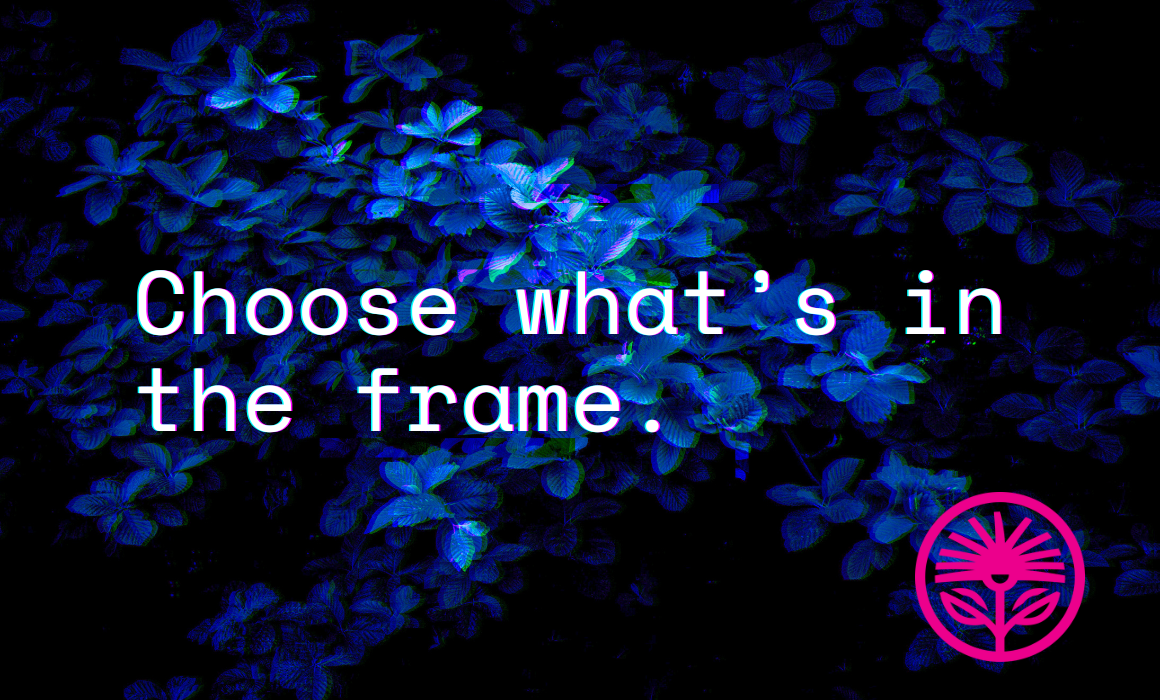Choose what’s in the frame — Kelford Labs Weekly
The way only you can.

“It’s a rather like lighting: When you start putting too many lights in, you get too many flags, and then you’ve got to go and have a cup of coffee and turn around and look at it and see what kind of chaos you’ve created. And you’ve got to realize: No, the initial idea was wrong. You’re trying to fix something in the wrong way.”
— Roger Deakins
My favourite cinematographer is Roger Deakins.
But it’s not because I like all of Roger’s films. It’s because I love how Roger thinks about his craft.
He pioneered some of the early technologies in the transition to digital filmmaking.
He was the cinematographer on O Brother Where Art Thou?, for instance, famous for its sepia-toned style, made possible by the then-new technology of a “digital intermediate.”
But if you listen to enough interviews with Roger, you’ll get the feeling that he somewhat regrets what the technology has done to the industry. By embracing digital technology, he opened the door for filmmakers to get more “creative” with their colour timing, their lighting, their post-production processes. Now, movies can get churned out almost immediately, almost thoughtlessly, with computers doing most of the work.
So am I happy that Roger helped turn the film industry into a factory machine, cranking out ugly, down-the-middle cliches? Of course not.
I’m happy that Roger is still out there, at 76 years old, educating new filmmakers on how to use technology correctly.
Responsibly.
Creatively.
Roger works with his wife, James, whose background in computer programming and digital systems helps her work with filmmakers on the technical craft of using digital cameras and post-processes.
And do you know their motto, their guiding principle?
“You hire a DP [Director of Photography] to oversee the visual.”
A cinematographer’s job, in their minds, isn’t to print film or click buttons on a computer screen. It’s to be responsible for the look and feel of the movie’s visuals.
No matter the format, no matter the film. No matter the technology behind it.
At the end of the day, the cinematographer’s job is to be responsible for the image in the frame.
I was on an agency’s website the other day. An agency I quite like and respect, but their website shocked me, for three reasons:
1) It was clearly written by AI.
2) The AI writing was pretty good.
3) But it still didn’t... work. It wasn’t... right.
It took me a moment to figure out why, though:
There was just too much of it.
Because they’d used AI to write their content, there was no upper limit, no acting constraint against just churning out more words. More words to match more services. More services to match more customer types. More customer types to match more desired revenue.
Because the computer did the writing for them, no one stopped to ask: Is this what we want to demonstrate? No one asked: Is this what we want in the frame?
I listen to a lot of interviews with filmmakers, and Bev Wood, one of the absolute legends of film processing and digital post-production, said this in an interview with Roger and James Deakins:
“That’s what I tell young people: Know what it [your camera] can do and have control over that.”
No matter what camera you’re using, whether it’s an antique Super 8 or a modern Arri ALEXA or RED, or even the phone in your pocket. Bev’s point is that you, the artist, the creator, the visionary, must be in charge and in control of the image. Which requires understanding the technology you’re using to capture it.
I think a lot of communicators, advisors, and consultants using AI to create their marketing content are like amateur filmmakers trying to make a movie on their iPhone:
They heard that “anyone can make a movie with a phone” and ran off to give it a try. Without understanding how the phone works, how its lens and sensor work. How ProRes files work.
If you don’t know that AI is sycophantic, that it’s trained and tuned to tell you what you want to hear, you’ll let it fool you into thinking the work it’s creating on your behalf is better than it is.
But yet another service offering, with yet another well-written description, isn’t going to help, no matter how great ChatGPT’s copy is.
As James Deakins says, “Just because you have a million settings [on your camera], that doesn’t mean you have to use them all.”
And just because ChatGPT can crank out endless copy that doesn’t mean you should.
Instead, it’s the job of a cinematographer to oversee what’s in the frame. And that’s your job as a communicator and a marketer, too.
The iPhone doesn’t choose how to shoot, and ChatGPT can’t choose your value or how to demonstrate it.
Like a digital camera, you suddenly have more options and choices than ever, but that also means you have more opportunities to confuse yourself and your audience.
Roger and James talk about the “friction” that old-school filmmaking used to introduce. Because you had to physically bathe and wash and dry film before you ever got to see what was in the final frame, you took more time to get it right. You slowed down, thought things through, and made clearer choices.
And, at the end of the day, that’s the choice we have to make:
To really, truly choose what we want to feature in our marketing, based on what we do best...
or confuse our prospects by not choosing at all. By saying too much, about too many things, simply because we can.
Well, because AI can.
So, if you’re using AI for your marketing, go for it. Don’t hold yourself back from exploring new technologies. But you’ve got to understand how it works.
And you’ve got to introduce some friction, a pause in your process where you ask: Is this what I want in the frame?
Because only you can choose.
Reply to this email to tell me what you think, or ask any questions!
Kelford Inc. shows experts the way to always knowing what to say.



